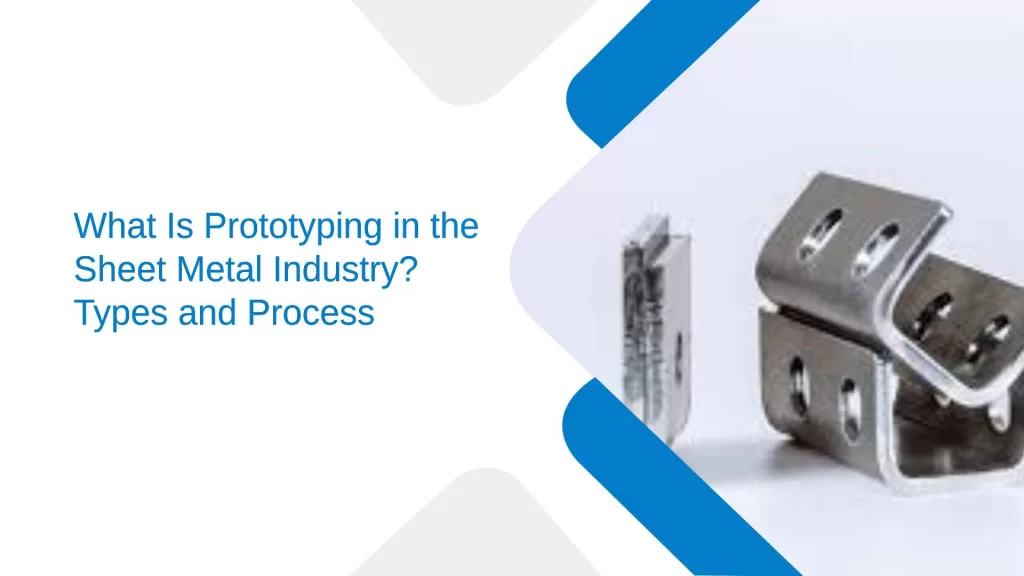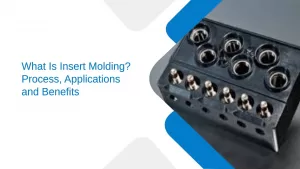What Is Prototyping in the Sheet Metal Industry? Types and Process
- Prototyping |
- Oct 28, 2025

Prototyping is a very important step in the sheet metal production process. It gives manufacturers the opportunity to verify their concepts before the actual large-scale production. A sheet metal prototype is simply the first iteration of a part that is meant to verify its design, shape, and functionality.
Sheet metal prototyping is a way of confirmation for the engineers to check the design, considering the correct fitting and the expected performance. Such early models with CAD software not only reveal design flaws but also assist in the modification process, free of the burden of investing in full production tools.
The trend of illustration through sheet metal prototyping services allows companies to measure up the durability, assembly, and finishing methods using the actual materials. All that contributes to fewer mistakes, lower costs, and a faster product development cycle, so the rapid sheet metal prototyping through metalworking has become a necessary step in the manufacturing process of many sectors.
What Is Prototype?
A prototype is a sample or an early version that is made specifically to test out the design and function of the product before it goes through the final production stage. In the process of sheet metal prototyping, engineers make a limited quantity of metal parts for testing and see whether the design is good enough in terms of performance and appearance in the real world.
As you understood the sheet metal prototyping definition, you have to know that this procedure is very important since metal can have a different response even if the models are designed perfectly. Moreover, a sheet metal prototype might point out the design imperfections early, which means cheaper rework later.
Verification of fit, form, and function is done by engineers using these samples, so every bend, cut, and hole is made sure to be in accordance with the original idea. After many cycles of the design, the final draft is fit for being produced with little changes, which not only promises better quality but also gives faster time-to-market.
Types of Sheet Metal Prototyping and Process
The sheet metal prototyping process is very systematic, and it leads to the production of a physical part that backs up the digital idea.
1. Setup
The very first prototype sheet metal step is the design and CAD modelling, where an engineer employs the latest technology to create and fabricate a 3D model, thus the part is turned into a flat pattern denoting bends, holes, and cutouts. The design is approved as it not only allows for seeing the final product but also guarantees perfection through verification before the manufacturing process actually starts.
2. Material Selection
The next stage is material selection, in which the appropriate metals like aluminium, steel, or stainless steel are picked through considering the metal’s strength, flexibility, and cost. The stage of prototyping itself then involves applying the most modern methods like laser cutting, waterjet cutting, and CNC bending to produce a piece of sheet metal of the prototype with high accuracy. Precise precision in the forming process requires checking each bend and each edge against design intent.
3. Testing
Every acoustic step should lead to assembly, finishing, and testing of the part, which is additionally checked for fit, function, and appearance. This is also the time when all adjustments required are made quickly. Rapid sheet metal prototyping is significantly used by many companies now, as it is a very effective way of speeding up this entire process, thus resulting in days instead of weeks for high-quality prototypes.
Therefore, these services are so important for engineers as they can use them for refining designs before going into mass production confidently.
Benefits of Sheet Metal Prototyping in Manufacturing
Manufacturers get a lot of benefits from sheet metal prototyping, mainly through the design process being accelerated and improved.
Quicker testing and development: Sheet metal rapid prototyping benefits engineers in rapidly testing their concepts without the necessity of waiting for complete production tools.
Detection of problems at an early stage: Deburring and polishing of the design issues can be done through the metal prototype development process, thus saving time and money.
Verification of manufacturing: Metal Prototype advantages are that it verifies that the material, finish, and fabrication methods selected are going to work.
Improved visualisation: A product’s visual and functional characteristics can be foreseen by the team even before the large-scale production.
Common use across industries: Automotive, aerospace, and electronics sectors are dependent on this method for assessing the strength, functionality, and appearance of their products.
Transitioning from Prototype to Production
That transition from sheet metal prototype to production includes, after a sheet metal prototype is sanctioned, the next step of scaling it for mass production, and it entails revisiting the aspects of manufacturability, tooling and tolerances.
The manufacturers ascertain that each detail of the prototype is repeatable at a constant rate. Material grade, surface finish and thickness are the points of concern for this checking. Changes in sheet metal production make it possible to strengthen the product and save money at the same time.
Tooling is yet another important element that has a say in this whole process. The prototypes may be produced by using a variety of methods, but full production might need overhead dies or fixtures specifically to scale up sheet metal manufacturing.
Final Thoughts
Sheet metal prototyping is regarded as the main source of manufacturing innovation. By producing the earliest prototypes, at Eigen Engineering, we will be able to assist our clients in saving time, cutting down expenses and making great product sales quicker.
Advanced tools and prototype metal fabrication are the main resources of our team for transforming original concepts into practical and high-quality parts. From conception to mass production, the areas of our main concern are accuracy, dependability, and efficiency.
In case you are searching for a reliable company for your next project, we are prepared to provide elite sheet metal prototyping solutions, pointing to the outcome.




